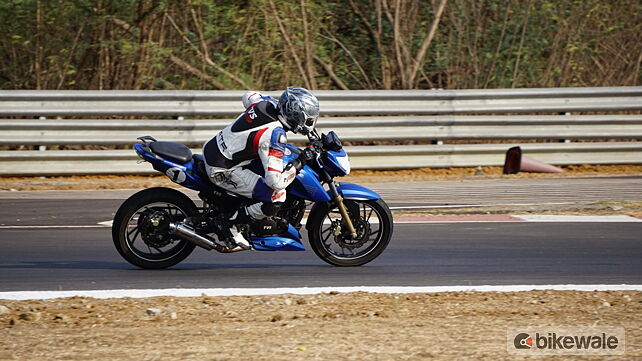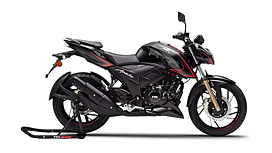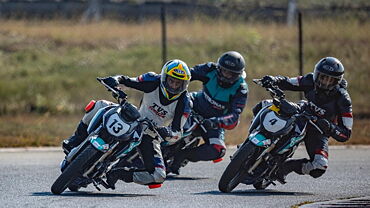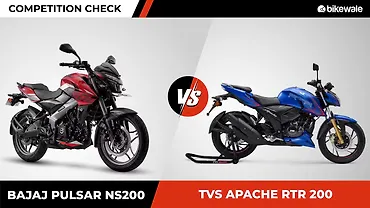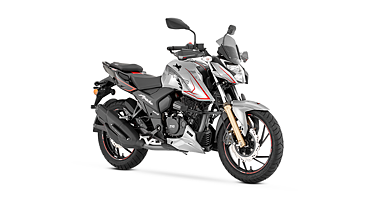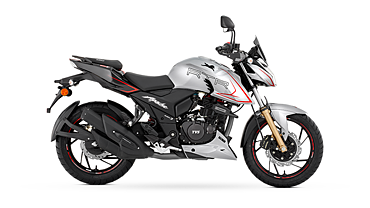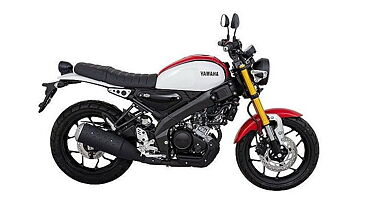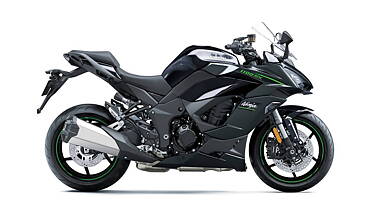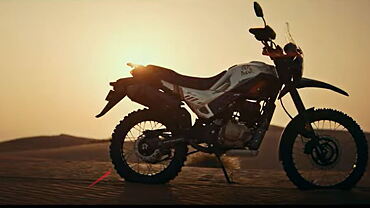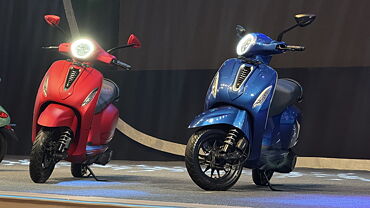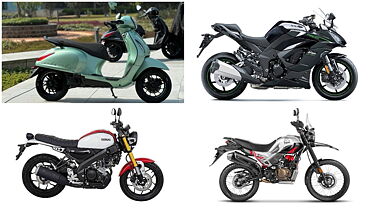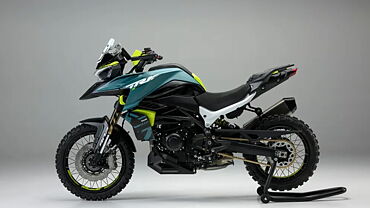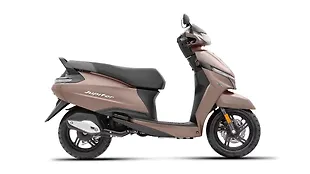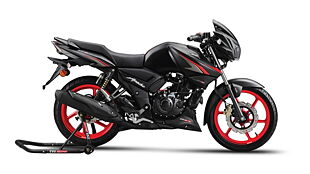The Racing School

The Irungattukottai race track in Chennai has a shorter club circuit, which is ideal for riding schools. Instead of moving on to the back straight after the C3, take a fast right hander which leads you directly to a kink and the C10. It was my third session of the day and I was getting my pace up, when the right toe slider scraped the tarmac, startling me. My immediate reflex was to chop the throttle and sit up on the motorcycle - a rookie mistake. The front end immediately responded to this change, getting unsettled and sending a wobble up the handlebar. And in these few seconds, I got a demonstration of the repercussions of two most common mistakes committed on a race track – letting your foot dangle on the footpeg and chopping the throttle.
As a part of the inaugural TVS Young Media Racer Program, 11 of us motorcycle journalists went through a racing training program at the Chennai track. Under new regulations, it is mandatory for an aspiring motorcycle racer to undergo a training course from a riding school. The TVS’ training program is quite different from other riding schools in the country. It doesn’t just focus on the how to ride better on a track, but also educates you about the other finer aspects and regulations about racing. Our instructors included professional racers like Emmanuel Jebaraj, Jagan Kumar, KY Ahmed and Harry Sylvester.
Session 1

‘Unlearn’ is a word you hear often when you visit a riding school. It involves discarding a few habits that might have worked for you as a street rider, but they can be counter-productive on a race track. Our training started off with an emphasis on how necessary it was to unlearn a few things and adopt new techniques.
The first session focused on the rules to be followed on the race track. Every race has a Race Direction which is a committee made of the race director, Clerk of Circuit (COC), riders’ representative and an FMSCI representative. This committee is responsible for taking important decisions during races such as declaring race conditions dry or wet or penalising a competitor for dangerous riding.
Coloured flags play an important role in instantly registering a message in the minds of the rider. These overcome language barriers and maintain safety and efficiency on a race track. Jebaraj gave us a brief about what every one of the 10 coloured flags stand for.

There is a set of regulations for the pit lane as well as for the safety of riders and the pit crew. A white line and a ‘60’ board just before the pit lane indicates the start of a speed limit, which is imposed until you exit the pit lane. Remember how Guy Martin lost his podium during the 2010 Isle of Man when he was slapped with a 30-second penalty for speeding in the pit lane? You don’t want to be in that spot. Also while rejoining the race track, it is the rider’s responsibility to look over his shoulder and ensure that he doesn’t fall in the way of some other rider already on the track.
While competitors usually get on to the grid earlier, the race start procedures commence only 5 minutes before the red lights come out, with a loud siren. The next siren blares out 3 minutes before the race begins, asking everyone apart from the competitors and the pit to vacate the track (yes, the paddock girls have to leave too). The next siren comes at 1 minute before the race, and requires pit crew to vacate the track with only the rider being allowed to be on the track at the 30 second mark. At the 5 second mark, the rider is supposed to get his bike ready for the start; even moving your bike or engaging the gear after the red lights come out will be counted as a false start (remember the Andrea Iannone episode in Argentina MotoGP?). Once the red lights appear, they can stay on from 2 seconds to 5 seconds before the race begins.

With the regulations and start procedures out of the way, Jebraj then moved on to the body positioning aspect on a race bike. While race bikes usually have lowered clip-on handlebars and rearset footpegs, the TVS Apache RTR 200 4V we were riding had the stock riding position. Nevertheless, the basics are the same. Body positioning on a motorcycle starts from the feet and works its way up - the ball of the foot on the foot peg, thighs and knees grabbing the tank, elbows parallel to the ground and the upper body loose and relaxed.
Armed with this load of information, we suited up to get our first taste of the Chennai race track. We were divided into three groups depending upon our track riding experience, with Jagan being put in charge of my group. We followed him in a file as he gave us a tour of the track, showing us the correct way to sit on the bike and pointing out the marshal posts. For once, being a super featherweight turned out to be advantageous for me, as I could crouch over the Apache easily, which meant better aerodynamics.
Session 2

Back in the classroom, Jebraj moved on to the correct way of riding a bike through a corner. On the face of it, cornering might not seems like a very complicated task. But breaking it down into four steps can help you make the most of the motorcycle and carry higher speeds. Braking, steering, hitting the apex and picking up the bike are basic steps. Once the braking is done, opening the throttle slightly keeps the front forks extended, helping maintain balance of the motorcycle. Being progressive during this part is very important, as abrupt throttle inputs can unsettle the motorcycles.
Out on the track, Jagan demonstrated the correct way to corner using these four steps with the four of us in tow. I remembered these steps well, and it was surprising how deconstructing the procedure boosts your confidence. After leading us through a couple of laps, Jagan dropped to the back of the group to see whether we were doing it right. The feedback I got after the session was that I wasn’t getting my knee out in the corners. In my defense, I wasn’t riding fast enough to justify getting my knee out. Jagan retorted with a smile that he was soon going to up the pace and I better start practicing irrespective of the speed. Well, no pressure then.
Session 3

The third session focused on further refining the steps involved in cornering, further improving our cornering speeds. Jebraj spoke about the science behind how lean angles effects your cornering speed, and body positioning while cornering. The session also involved finding braking and turn-in reference points and taking an ‘Out in Out’ approach towards a corner. Braking and turn-in reference points differ from corner to corner on every race track. They depend upon your comfort zone. The deeper the braking and turn-in point, the faster you can take a corner. So it is basically about finding what your limits are, and then slowly pushing further.
As for the ‘Out-in-Out’ approach, it is the most rudimentary form of a racing line, one suitable for beginners. It requires you to go wide while entering a corner, hitting the inside edge of the track around the mid-point, and then accelerating out towards the outer edge while exiting the corners.
On the track, it started getting complicated as we had to find our own reference markers while implementing the steps from the previous sessions. Initially, I found it difficult to process all of this information together, but after putting in a few laps I had identified my markers for a few corners. I also started getting better with the Out-in-Out approach which allowed me to carry on at a higher speed into the corner and throttle out earlier. I even managed to get my knee out during this session, eliciting a thumbs-up from Jagan.

Session 4

They say that it is not a matter of ‘if’ but ‘when’ a motorcycle racer has a crash. Those fully committed to the sport have to go in with the readiness to crash. Hence the final session dealt with an important aspect of racing – crash management. Jebraj started off with some dry humour about how he wished we never have to use these. When in a crash, the first thing to do is to not panic and keep your eyes open. The brain tends to respond with evasive actions in such situations, something which isn’t possible with closed eyes. Keep your head raised and arms folded over your torso. And the most important of all, let go of the bike as soon as you are down!
Following this we went out on the track where Harry gave us a demonstration of getting a perfect race start. While the initial instinct might be to dump the clutch, releasing it smoothly makes for a much quicker race start. Wheelieing during a start might make you look cool, but it can also put you in the back of the grid.
With the theory session drawing to an end, all of us were let loose on the track, under instructor supervision, of course. When we return to the race track the next time, the 11 of us will be fighting it out for the title of the TVS Young Media Racer championship. It remains to be seen how much of these learnings I will be able to implement during the races.

Gallery
1/10
TVS Apache RTR 200 4V Action
Double Tap to Zoom











